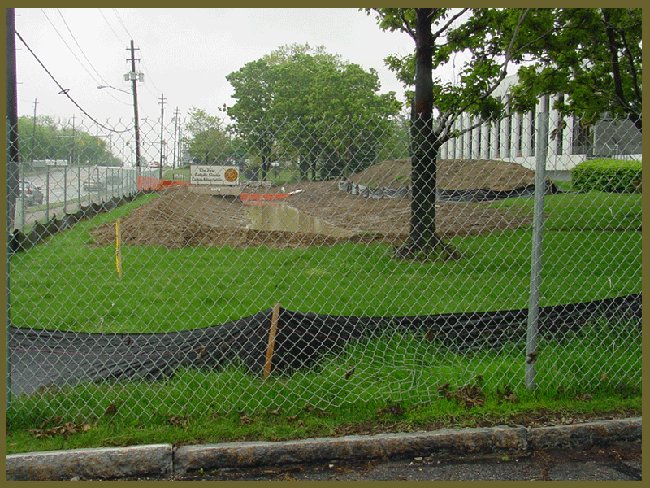COMPENSATORY FLOOD STORAGE ON CHAGRIN
Submitted by Jeff Buster on Sat, 05/27/2006 - 21:05.

Compensatory Flood Storage on Chagrin We are getting our NEO act together – slowly. Right west of the Beachwood Water Tank (Kinsman pumping station) The First Catholic Slovak Ladies Association has constructed a rain water catchment basin at the front of their property. This is a radical improvement from what has been going on here for years – whenever new hard impervious surfaces were constructed, there has been no requirement to install compensatory storage to accommodate the additional runoff resulting from the added impervious surface. Finally the message is sinking in and municipalities are compelling storage with new construction. This will save all taxpayers from having to construct larger drainage systems on public property. The closer rain is stopped where it falls and is absorbed – the cheaper the infrastructure costs. I hope to balance my many cynical posts with good news such as this.
( categories: )
|
How does a compensatory program work?
So is this required by Beachwood of this property owner for an expansion of this site, or is this a community compensation, that happens to be here - and who pays?
WORMS LOWER TAXES
I am not actually familiar with the regulations regarding this particular site, (though my strong assumption is that the church expansion has been conditioned with this storage pond) but I can speak about how it works in California and Massachusetts.
Each individual owner, upon applying for a building permit, special permit, zoning variance, etc., is required to compensate for any added impervious surface. The compensation can be on the property for which the permit, variance, etc. is issued, or can be part of a watershed quid pro quo with other developers or landowners. 99% of the time it is on the property of the permitee - and the site flood storage condition becomes a condition registered on the deed and recorded. Maintenance of the swale, pond, leaching tank or whatever is a condition of the permit.
But in front of this compensatory storage there is an even more important precipitation capture mechanism: worms and soil duff.
Shaker Heights, with its curbside free collection of yard waste - tree leaves, limbs, clippings, lawn cuttings - creates a huge disincentive to composting and leaving organic material "under the rug" on ones property. Instead, we can throw it away for free!!! BAD.
All the organics that are hauled out of Shaker Heights are worm food. The more organics hauled away, the fewer worms remain to bore 4, 5, and 6 feet down into the clay.
Worms save you tax money by avoiding the need for flood infrastructure. More (with close up photos) on this later. There should be at least one worm every 10 inches in all directions. Check for thier castings...
HAVE YOU FED YOUR WORMS TODAY